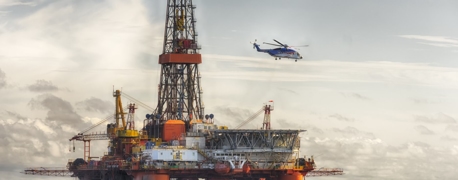Top 10 US Ports: Balancing Commerce & Worker Safety

Approximately 360 sea and river ports serve as the lifeblood of the U.S. economy, facilitating the flow of more than 2 billion tons of cargo in and out of the country every year. In addition to moving goods, these ports support millions of jobs, drive technological advancement, and contribute significantly to local and national economies.
America’s busiest ports, from the sprawling complexes of Los Angeles and New York to the strategic hubs of Savannah and Houston, are the driving force behind the country’s status as a key player in global trade. Not only will we consider—and rank—the busiest ports in the United States, but we will reflect on the challenges faced by workers and what role the companies operating at America’s ports can play in keeping them safe.
First, let’s look at the nation’s busiest ports, based on the number of 20-foot equivalent units (TEUs, a measure of volume in units of 20-foot-long containers) they handled in 2022.
1. Port of Los Angeles, California
The Port of Los Angeles tops our list with over 10.6 million TEUs. Located south of Los Angeles in San Pedro Bay, it is comprised of 7,500 acres of land and water and includes passenger terminals as well as 25 cargo terminals. It is also a major hub for cruise ships.
Key Features: The Port of Los Angeles has maintained the number-one position as the busiest port in the U.S. for over 20 years. It is particularly significant for its role in supporting about 3 million jobs nationwide. The port facilitates 20% of all imports into the United States, and its major trading partners include China, Japan, Vietnam, and South Korea.
2. Port of New Jersey and New York
The Port of New Jersey and New York is second with approximately 9.5 million TEUs. The port moved about $271 billion worth of goods in 2022 alone.
Key Features: The largest port on the East Coast, the Port of New Jersey and New York conducts extensive trade with China, India, Germany, Italy, and the Netherlands. It features 6 container terminals that can accommodate 9 large vessels at once, including the world’s largest container ships.
3. Port of Long Beach
Coming in close in third place with about 9.1 million TEUs is the Port of Long Beach, California. This port is located close to the Port of Los Angeles in San Pedro Bay. It has 22 terminals, including 6 container terminals.
Key Features: The Port of Long Beach is known for its eco-friendly policies and practices, including its award-winning Green Port Policy. Primary exports include meat and grains, while imports include beverages and refrigerated food. The port serves as a primary channel for U.S.-Asian trade.
4. Port of Savannah
The Port of Savannah is fourth with roughly 5.8 million TEUs. With two main terminal facilities, the port primarily handles paper, fabrics, wood pulp, clay, electronics, appliances, automobiles, and consumer goods.
Key Features: The Port of Savannah is the largest single container terminal in North America, with a new terminal that is expected to open by 2035. The port is a key route for trade with Asia, Latin America, and Europe, and it offers advanced technological capabilities.
5. Port of Houston
The Port of Houston is fifth on our list of America’s busiest ports with over 3.9 million TEUs. It has two container terminals and the largest petrochemical production facility in the U.S.
Key Features: The Port of Houston is the largest port in the Gulf of Mexico and its operations contribute to about $265 billion in revenue each year. Its economic impact is significant, generating approximately 1.35 million jobs in Texas and 3.2 million jobs nationwide. After petroleum, the Port of Houston’s major exports include oils, plastics, mineral products, wood, steel, iron, and fertilizers.
6. Port of Virginia
At sixth, the Port of Virginia handled about 3.7 million TEUs in 2022. The port has four marine terminals as well as deepwater channels and cutting-edge infrastructure that allow for faster, more efficient cargo handling.
Key Features: Because the Port of Virginia is directly connected to the Atlantic Ocean, it can accommodate the world’s largest container vessels. The port provides direct and indirect employment for over 397,000 people, and it trades with China, Germany, and Brazil, among others. Key exports include salt, stone, furniture, mineral fuels, and machinery.
7. The Northwest Seaport Alliance (Ports of Seattle & Tacoma)
Including the ports of Seattle and Tacoma, the Northwest Seaport Alliance (NSWA) is seventh with over 3.3 million TEUs. These seaports unified in 2015 to bring more cargo through the Puget Sound gateway.
Key Features: The Northwest Seaport Alliance provides a major maritime trade opening with Asia, and it supports the regional economy with 58,000 jobs. Its four terminals handle diverse cargo, including automobiles, breakbulk cargo, and containerized cargo.
8. Port of Charleston
In eighth place, the Port of Charleston handled approximately 2.8 million TEUs. Its six terminals are operated by the South Carolina Ports Authority.
Key Features: The Port of Charleston supports over 187,000 jobs and is known for its efficiency and environmental commitment. It is currently undergoing upgrades to accommodate larger ships.
9. Port of Oakland
The Port of Oakland handled about 2.3 million TEUs, making it ninth on our list. It has 2 container vessels and approximately 27 cranes.
Key Features: The Port of Oakland is a main port for trade with Asia. It is a significant export center for agricultural goods, technology, and wine. The Port of Oakland is currently undergoing projects to improve capacity and reduce emissions from vehicles working at and around the port.
10. Port of Miami (PortMiami)
Finally, the Port of Miami is in tenth place with approximately 1.2 million TEUs. Located in South Florida, the port handled more than $75.6 billion in cargo in 2021.
Key Features: The Port of Miami is known as the cruise capital of the world, welcoming about 5 million cruise ship passengers each year. It is also a major trade gateway for the Caribbean and Latin America. The Port of Miami supports more than 334,000 jobs and recently undertook the Deep Dredge Project to accommodate larger ships.
Accidents at the Nation’s Largest Ports
America’s 3,700 marine terminals at its more than 360 ports contribute approximately $500 billion to the U.S. GDP (gross domestic product), which is the most comprehensive way to gauge the economic health of the nation. The role of America’s busiest ports in supporting jobs and the economy cannot be understated. However, they are also places where complex logistics meet with the raw physicality of maritime work. When the companies that operate at these ports do not put safety first, their workers often pay the price.
According to the Occupational Safety and Health Administration (OSHA), the perilous nature of work at marine terminals and in port operations is evidenced by alarming rates of fatality, injury, and illness among workers, significantly eclipsing the national averages for workplace safety. As of 2017, the sector employed approximately 98,000 people, many of whom were engaged in longshoring. Between 2011 and 2017, the fatality rate in this workforce stood at 15.9 per 100,000 workers annually—5 times greater than that of the overall U.S. workforce. Furthermore, the period witnessed an average of 4,916 nonfatal injuries or illnesses per 100,000 workers each year, nearly double the rate for U.S. workers.
At any U.S. port, primary risks include vehicular accidents, falls, drowning accidents, and material handling accidents. Incoming and outgoing vessels can also present risks if they lose propulsion, are negligently operated, or otherwise malfunction and strike another vessel or a fixed object, such as a bridge.
Looking at real examples of accidents can give us an idea of what can be done to prevent such incidents from continuing to occur at our busiest ports, where the sheer volume of cargo can make risks even higher.
Fatal Bridge Collision at the Port of Baltimore
Six construction workers lost their lives when a 984-foot container vessel named the Dali struck the Francis Scott Key Bridge shortly after it deported the Port of Baltimore on March 26, 2024. Soon after leaving port, the ship lost power and collided with the bridge, which spans the Patapsco River. The Dali was able to issue a mayday before impact, giving authorities just enough time to halt traffic. A team of eight construction workers was already out on the bridge, however, filling potholes. They had no warning before the cargo ship struck, sending them into the water.
Only two of the eight workers were rescued.
The cause of the bridge collision at the Port of Baltimore is still under investigation, including the exact reason the ship lost propulsion, although some have speculated bunkering fraud.
Fatal Accident During Container Ship Unloading
A tragic incident unfolded at a dock during the unloading and transfer operations of containers from a ship to trucks. A longshoreman, while working within a designated "safety lane" between two truck lanes, fell into an adjacent truck lane and was struck by the rear wheel of a moving truck chassis, resulting in his death.
The "safety lane" where the incident occurred was intended to serve as a protective space for longshoremen to work and was also used for storing twistlocks, which are used to secure containers. According to OSHA’s report on the event, the longshoreman had signaled the truck driver to proceed, but as the truck passed, he fell into its path.
The exact cause of the longshoreman's fall remains unknown, with speculations that he may have tripped over the twistlocks lying on the ground. Contributing to the risk was the insufficient distance maintained between vehicles on the dock, which was only 3 to 10 feet instead of the recommended minimum of 20 feet. Furthermore, supervisors lacked formal training in accident prevention, which might have impacted the enforcement of safety measures on the dock.
Fatal Fall in Barge Hold
Another fatality occurred in the hold of a bulk cement carrier barge, where a worker suffered a fatal fall while operating alone. The man was walking on a catwalk within the barge hold to operate an aeration system, which involved opening and closing air valves to facilitate the movement of bulk cement to onshore storage silos, when he fell and suffered a fatal skull fracture.
Two hours after the worker first entered the hold, he was discovered by a co-worker lying facedown on the catwalk. No one witnessed the incident, and the catwalk appeared to be in good condition, so the exact cause of the fall could not be determined. It's speculated, however, that the employee may have tripped and struck his head either on the catwalk or a nearby guardrail.
According to OSHA’s report on the incident, the risk could have been mitigated if the employer had implemented procedures to frequently monitor employees working alone in hazardous environments. Better supervision and a “buddy system” could have helped ensure the injured worker received prompt medical attention after hitting his head, which may have resulted in his survival.
Worker Fatality Due to Improperly Secured Cargo
Another serious accident took place in the hold of a ship during the process of loading lumber. A laborer was fatally injured when bundles of lumber, improperly secured with oak dunnage, shifted and fell onto him. The man was attempting to retrieve crane slings that had fallen behind the stack of lumber bundles and the ship's bulkhead when one of the dunnage pieces cracked, causing the lumber to shift and pin him in a crouched position, leading to his suffocation.
The immediate cause of the incident was the improper securing of the cargo, compounded by the inexperienced laborer unhooking all the eyes from the slings attached to the spreader bar, contrary to the correct practice of unhooking just one eye from each sling. The direction given by the gang leader to retrieve the slings from an unsafe position further placed the laborer at risk. The incident was also preceded by the breaking of pine dunnage earlier in the shift, prompting the switch to stronger oak dunnage, which ultimately failed.
The lack of experienced personnel in the hold, reliance on on-the-job training, and the absence of close supervision contributed to the unsafe conditions leading to this tragic accident.
All Employees Are Entitled to Safe Workplaces
Each of these incidents occurred in different circumstances but with the same tragic outcomes. They all could have been prevented had employers provided proper training, equipment, supervision, and procedures to minimize the risks associated with each task.
At America’s busiest ports, these risks are present. It is up to employers to set and enforce safety policies that protect their most valuable assets—their workers. No matter what.
- Categories


